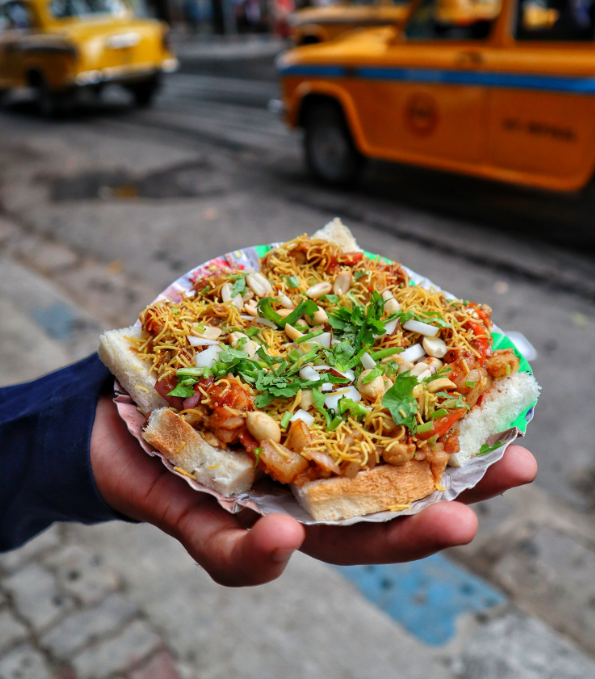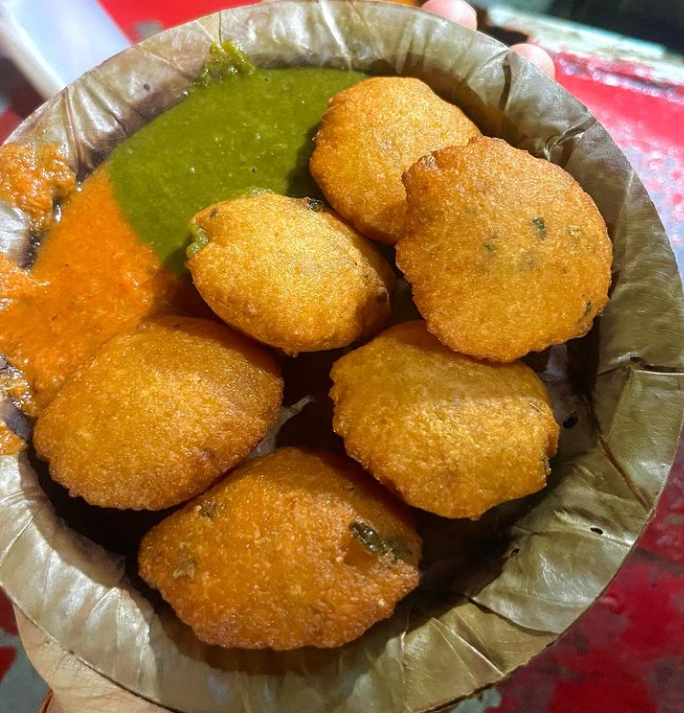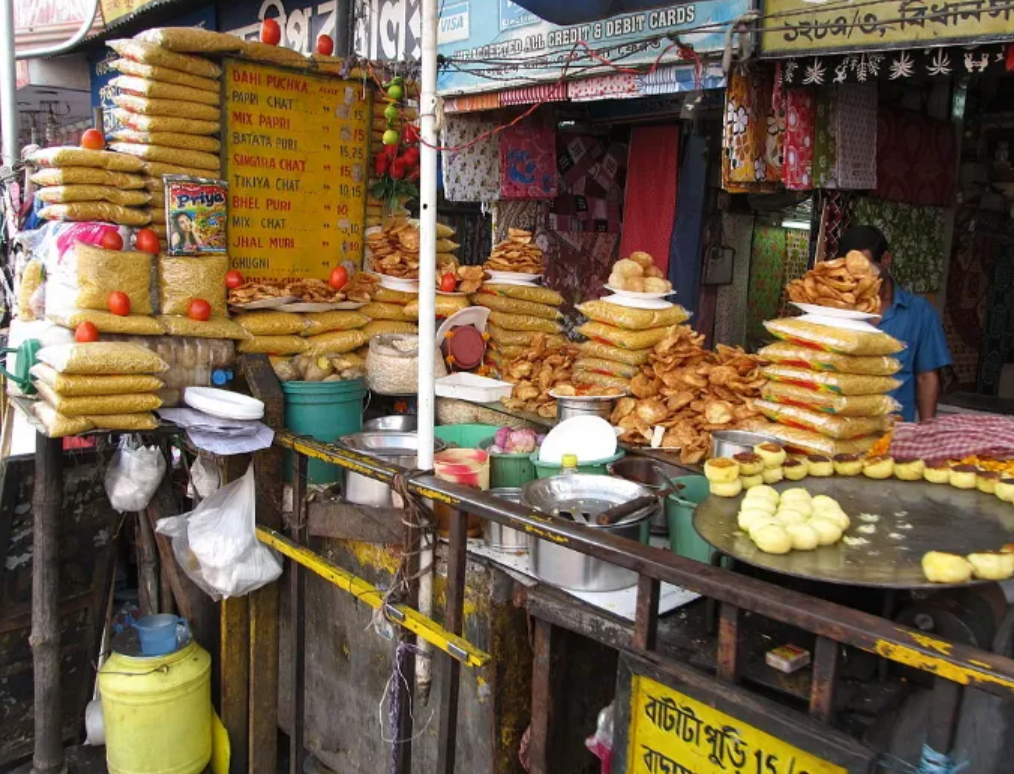There is chaat, there is chaat and there is Kolkata. Bas, there is no place which serves real authentic chaat with the passion and swaad that Kolkata does. Benaras probably comes a close second. That’s it.
Here is the thing: there are some memories which stick. When you close your eyes you can actually see them, or rather taste them. This one, from the 1970s, for me, is one of those.
Kolkata has always been a melting pot of amazing street food and my earliest memories of chaat are those much-awaited trips to the Victoria Maidan on Sundays. The open ground or Maidan in front of the formidable and illustrious Victoria Memorial became a bazaar of street food every evening. Ambassadors, Fiats, Contessa lined the broad Red Road waiting for their occupants to come back happy and satiated. And why not? We had such a feast at hand.

The evening would start with gulping down the most delicious aloo mashed with Bengal chana and the tangy tamarind water-filled puchkas or panipuris, served by the puchkawala in the “sal pattals” twisted into a cone, all from his huge tokri.
After that start, it was time to move to the jhaalmuri wala. No no, not for the jhaalmuri (that deserves a special post of its own) but the quintessential Calcutta special, Bread chaat. In it, a slice of bread is divided into four parts on a paper plate, then topped with a sweet-spicy mixture of aloo, tomato, onion, bhujiya, peanuts masala, imli, and lemon, and garnished with fresh coconut and coriander. Uff, I am salivating already.

Image by Indian Food Explorer

There was the famous Victoria vada wala – probably named after the beautiful moonlit glowing structure in front of the stall. Here, I would patiently wait for my turn for the delicious small puffed vadas made with chana dal, fried right in front of you, plonked from the kadhai, served steaming hot to your paper plate alongside coriander and garlic chutney.

Image by bhukkad_banjarey
One couldn’t miss the popular dal chilla wala with his big tawa on which he spread a dollop of dal batter into thin soft chillas garnished with onion lacchas, green chillis, and coriander leaves, all served with an array of yummiest chutneys.
By this time we had probably gorged on only a fraction of the available chaat. The next one was the aloo kabli chaat wala. Kabli or ghugni or white matar is a Bengal favourite. The peas are combined with aloo, loads of imli chutney, spices, green chilli and then mixed, mixed and mixed until the kabli was ready to serve.

The then little me was quite stuffed, but gluttony would always get the better of me when I would spot the chana jor wala in his crisp white kurta and dhoti with a white dabbawalas topi and a cane basket tied to his waist. In the basket was a burning hot coal, slowly roasting the flattened chana which was then sold as a mixture, mixed with crisp thin wafers, spices, masala onion, and lemon juice – served in small “thongas” (newspaper packets).
Now it was time for a drink to digest all that and what better than the cool masala soda shikanji or the Calcutta special masala Thums Up from the cold drink stall.
We were in Bengal where no meal is complete without kuch meetha. Yes, there were kulfi walas, not just offering the traditional kesar malai kulfi, but also sitaphal kulfi, and orange kulfi (which was essentially frozen orange blossom), and chikoo kulfi – all this before Naturals Ice Cream even became a thing.
And how could I forget the paan wala with just the right finish? This typically was a small gulkand kesar and soft supari-filled Bangla patta gundi paan (a small cone shaped paan).

In later years the chaat walas were evacuated in a maidan-cleaning corporation drive and our whole Sunday ritual was lost.
But don’t be sad. Remember nothing is lost in The City of Joy!
Cut to the present. Years have flown by. The city has a new look. There are swanky malls, smooth roads and smart condos. BMWs and Mercedes cars line the streets. The future generation of the chaat walas are still here and now rule the roost. They are still besieged by men, women, kids, youngsters, oldies alike, all looking to spice up their evenings with the famous chaats on the Kolkata streets.
Only the locations have changed. They can now be found at popular spots like in front of Vardaan Market at Camac Street, in Russell Street, and beneath the famous Dimple Court building on Theatre Road.
This is what is special with Kolkata: everything can change but not the “bhalobasha” for people and of course the food which Calcuttans make their own!
Eta kintu miss korben na – taratari aashun!
(And this you cannot miss – come soon

